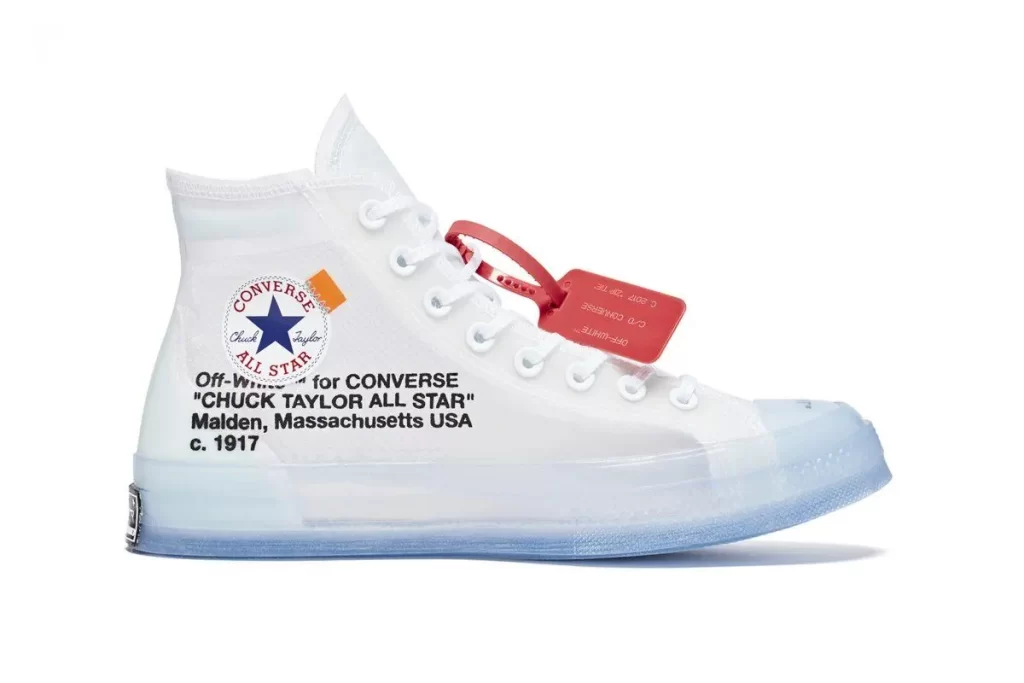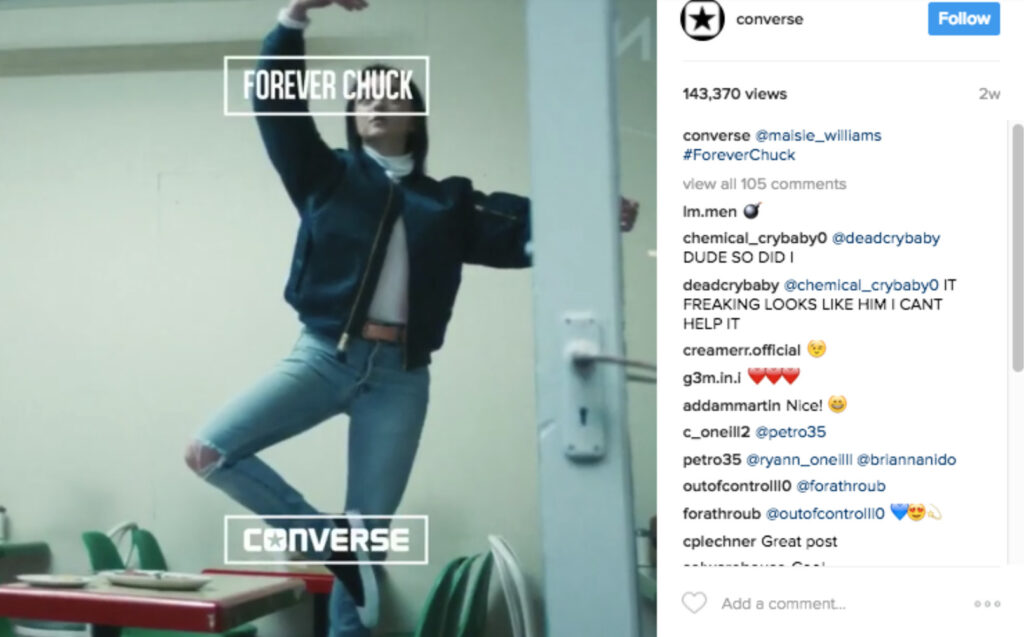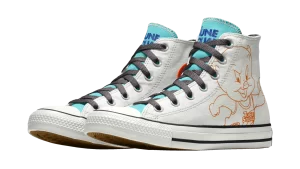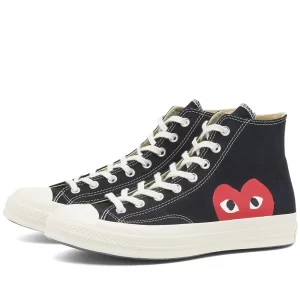Converse, a name synonymous with timeless style, rebellious spirit, and an unwavering commitment to authenticity, has been a cornerstone of American culture since its inception in 1908. From its humble beginnings as a rubber shoe company to its meteoric rise as a global fashion icon, Converse has consistently delivered sneakers that transcend mere footwear, becoming cultural symbols that embody the spirit of individuality and self-expression.
The Genesis of Converse: A Journey of Innovation and Adaptability
Converse’s story began in Malden, Massachusetts, where Marquis Mills Converse founded the Converse Rubber Shoe Company. Initially producing rubber galoshes and other utilitarian footwear, Converse soon recognized the potential for a more versatile and stylish sneaker. In 1917, the company introduced the Converse All-Star, a high-top canvas sneaker with a vulcanized rubber sole, forever changing the landscape of footwear.

The All-Star, later renamed the Chuck Taylor All-Star, quickly gained popularity among basketball players, including the iconic player Chuck Taylor himself, who became an advocate for the brand and helped popularize it among athletes and non-athletes alike.
A Sneaker for the Masses: A Symbol of Counterculture
The Converse All-Star transcended its athletic roots to become a cultural phenomenon, embraced by generations of individuals who valued its simplicity, comfort, and enduring style. The sneaker’s clean lines, unassuming design, and versatility made it a blank canvas for self-expression, allowing individuals to customize and personalize their shoes to reflect their unique identities.
From rebellious youth subcultures to mainstream fashion trends, the Converse All-Star has been adopted by individuals from all walks of life, becoming a symbol of individuality, self-expression, and a defiant spirit. Its timeless design and adaptability have made it a staple in wardrobes worldwide, transcending cultural boundaries and generations.
Acquired by Nike, Maintained by Fans
Converse is currently a subsidiary of Nike, Inc. Nike acquired Converse in 2003 for an estimated $305 million. The acquisition was seen as a strategic move by Nike to expand its reach into the lifestyle footwear market and to gain access to Converse’s iconic brand and loyal customer base.
Despite being owned by Nike, Converse has maintained its own distinct brand identity and continues to produce its signature sneakers, such as the Chuck Taylor All-Star. The brand has also expanded into other categories, such as apparel, bags, and accessories.
Converse: A Legacy of Authenticity and Enduring Appeal
Today, Converse stands as a testament to the enduring power of authenticity and timeless design. The brand has consistently remained true to its roots, continuing to produce sneakers that embody its core values of simplicity, functionality, and a rebellious spirit.
Converse’s sneakers have become more than just footwear; they have evolved into cultural symbols, representing generations of individuals who value self-expression, authenticity, and a refusal to conform. The brand’s legacy continues to endure, as Converse remains a beacon of individuality and a reminder of the power of sneakers to transcend fashion and become cultural icons.
Marketing Strategies of Converse
In the ever-evolving landscape of global fashion and footwear, Converse stands as a timeless icon with a legacy dating back to 1917. Renowned for its emblematic Chuck Taylor All Star sneakers, the brand has not only survived but thrived through the decades by consistently adapting its marketing strategies to resonate with a diverse and dynamic consumer base. From strategic collaborations with influencers and artists to a robust social media presence, Converse’s marketing playbook is a fascinating study in brand evolution and staying power. In this piece, we delve into the intricacies of Converse’s marketing strategies, exploring how the brand continues to capture hearts and minds while navigating the ever-shifting currents of contemporary culture.
1. Brand Positioning
Brand positioning is a crucial marketing strategy for Converse, as it helps the brand to differentiate itself from competitors and establish a unique identity in the minds of its target audience. Converse positions itself as a brand that celebrates individuality, creativity, and self-expression. The brand’s mission is to inspire people to embrace their uniqueness and express themselves authentically through its products.
To achieve this positioning, Converse focuses on creating products that stand out from the crowd. Its iconic Chuck Taylor All Star sneakers, for instance, have remained largely unchanged since their introduction in 1917. The brand’s decision to retain the classic design is deliberate, as it allows consumers to customize the shoes with their own personal touches, such as colorful laces or patches. This customization option enables individuals to express their distinctiveness and creativity, which aligns with Converse’s brand values.
Converse also communicates its brand positioning through its marketing campaigns. The brand often partners with influential figures in music, art, and fashion to showcase how its products can be incorporated into diverse lifestyles and cultures. For example, Converse has collaborated with hip-hop artist Tyler, the Creator and fashion designer Virgil Abloh to create limited-edition sneakers that blend streetwear with high-fashion. These collaborations not only generate buzz around the brand but also illustrate how Converse supports creativity and individuality. By leveraging user-generated content and partnering with influential figures, Converse reinforces its brand positioning and establishes a strong connection with its target audience.


2. Target Audience
Target audience is a crucial aspect of Converse’s marketing strategy. The brand identified its primary target audience as teenagers and young adults aged between 15 and 30 who are interested in fashion, music, art, and culture. This age group is particularly drawn to Converse’s iconic Chuck Taylor All Star sneakers, which have become a staple in youth culture.
To effectively target this audience, Converse employs a variety of marketing tactics. The brand recognizes that young people are heavily influenced by social media, so it invests significantly in digital marketing efforts. Converse creates engaging content for platforms like Instagram, TikTok, and YouTube, featuring young influencers and ambassadors who embody the brand’s spirit of individuality and self-expression. This helps to increase brand awareness and credibility among the target audience.

Additionally, Converse partners with popular music and arts festivals, such as Coachella and Lollapalooza, to reach its target audience. At these events, the brand sets up interactive installations and offers limited-edition sneakers, allowing attendees to experience the brand firsthand. Converse also collaborates with influential artists, musicians, and designers to create co-branded products that appeal to its target audience’s interest in fashion and creativity. By implementing these targeted marketing strategies, Converse successfully connects with its desired audience and solidifies its position as a beloved youth culture brand.
3. Product Innovation
Product innovation is a vital component of Converse’s marketing strategy. The brand continuously introduces new and updated versions of its iconic Chuck Taylor All Star sneakers to keep up with the evolving tastes and preferences of its target audience. Converse understands that its customers crave novelty and exclusivity, so it regularly releases limited-edition collections and collaborations with renowned artists, musicians, and fashion designers. These collaborations not only generate buzz around the brand but also allow Converse to tap into new markets and demographics.

One of the ways Converse drives product innovation is by experimenting with new materials and technologies. The brand has introduced sneakers made from sustainable materials, such as recycled plastic, and has also incorporated advanced technology, like Nike Flyknit, into its designs. This approach not only appeals to environmentally conscious consumers but also caters to those seeking performance-oriented footwear. Moreover, Converse’s willingness to take risks with bold, eye-catching designs has helped the brand maintain its relevance in the ever-changing landscape of youth culture.
Another significant aspect of Converse’s product innovation strategy is its commitment to customization. The brand offers a wide range of colors, patterns, and materials for customers to choose from, allowing them to personalize their sneakers according to their individual style. Furthermore, Converse has launched initiatives like the “Design Your own Custom Shoes” platform, which enables customers to design their own sneakers from scratch. By providing consumers with the tools to express their creativity, Converse fosters a deep emotional connection between its customers and the brand, leading to increased brand loyalty and advocacy.

4. Influencer Collaborations
Influencer collaborations play a significant role in Converse’s marketing strategy. The brand partners with influential individuals in various fields, such as music, art, fashion, and sports, to showcase its products and reach a wider audience. These collaborations help Converse tap into new markets and demographics, while also increasing brand awareness and credibility.
Converse’s influencer collaborations are carefully curated to ensure that they align with the brand’s values and target audience. For instance, the brand has worked with popular musicians like Metalicca band, who have a large following among young people and are known for their unique style and creativity. Similarly, Converse has partnered with fashion designers like Virgil Abloh and Rick Owens, who have a strong reputation in the fashion world and can help the brand reach a more stylish and trendy audience.
The brand has also collaborated with Sacai which has been recognized and respected for its influence on luxury fashion since the brand’s 1999 inception. Created by Chitose Abe, Sacai has also collaborated with Nike over the years experimenting a bit with Nike’s low-top and high-top sneakers (The Blazer 77s are similar to Converse’ in terms of design.) Sacai and Converse dropped a progressive silhouette that reflected Japanese luxury streetwear beautifully, while still staying true to Converse’s simple casual style.

The collaborations are often structured around limited-edition product releases, with the influencer partner helping to design and promote the product. This creates a sense of exclusivity and hype around the product, driving demand and encouraging customers to buy the product before it sells out. Additionally, the influencer collaborations help Converse tell stories about its brand and products, highlighting the quality, craftsmanship, and history behind the sneakers. By working with influencers who share the brand’s values and aesthetic, Converse can amplify its message and reach a larger audience, ultimately driving sales and strengthening its position in the market.
5. Content Marketing
Content marketing is a strategic marketing approach that Converse utilizes to attract and engage its target audience. The brand focuses on creating valuable, relevant, and consistent content that resonates with its audience and aligns with its brand messaging. Converse’s content marketing efforts include blog posts, videos, social media posts, and influencer collaborations.
The brand’s content marketing strategy is built around its brand pillars of creativity, self-expression, and youth culture. Converse creates content that inspires and educates its audience, while also showcasing its products in a subtle yet effective manner. For example, the brand might create a video series that features up-and-coming artists sharing their creative processes, or a blog post that highlights the best ways to customize Converse sneakers. By doing so, Converse is able to establish a strong emotional connection with its audience and position itself as a thought leader in the youth culture space.
Converse’s content marketing efforts also help to drive traffic to its website, increase brand awareness, and ultimately drive sales. The brand’s content is designed to be shareable and easily accessible across multiple platforms, which helps to extend its reach and engagement. Additionally, Converse’s content marketing strategy is closely tied to its SEO efforts, ensuring that the brand’s content is optimized for search engines and can be easily discovered by its target audience. Overall, Converse’s content marketing strategy is a critical component of its overall marketing plan, helping the brand to build a strong relationship with its audience and stay top of mind in the competitive footwear industry.
6. Retail Experience
Retail experience is a key marketing strategy for Converse, as the brand aims to create an immersive and engaging environment for its customers. Converse stores are designed to reflect the brand’s heritage and personality, with features such as exposed brick walls, vintage advertisements, and iconic Converse imagery. The stores also offer a unique retail experience, with interactive displays and installations that encourage customers to explore and interact with the products. For example, customers can try on shoes in a specially designed “Shoe Salon,” where they can see themselves in a mirror surrounded by Converse’s latest styles.
In addition to its physical stores, Converse also creates pop-up shops and temporary retail experiences that bring the brand’s personality and style to life in unexpected ways. These pop-ups often feature exclusive products, live performances, and other surprises that create a memorable experience for customers. For example, Converse recently opened a pop-up shop in New York City that featured a customization station where customers could design their own shoes, as well as a photo booth and a live DJ set. This type of experiential retail helps to create a strong bond between the customer and the brand, and reinforces Converse’s position as a leader in the youth culture and streetwear spaces.


Finally, Converse also uses its retail experience to communicate its brand values and storytelling. The stores feature visual merchandising and display elements that highlight the brand’s history, cultural connections, and commitment to creativity and self-expression. For example, Converse may display vintage advertisements or photographs that showcase the brand’s rich heritage, or create window displays that feature local artists or musicians who embody the Converse spirit. By immersing customers in the brand’s world and values, Converse creates a deeper emotional connection that goes beyond simply selling shoes. This approach helps to build brand loyalty and advocacy, and reinforces Converse’s status as a cultural icon.
7. Global Reach
Global reach is a marketing strategy that Converse employs to expand its presence and reach a broader audience worldwide. The brand has a strong global presence, with products available in over 120 countries and a network of distributors and retailers that spans across six continents. Converse’s global reach strategy involves adapting its marketing messages and campaigns to resonate with local cultures and communities, while still maintaining a consistent brand voice and image.
To execute this strategy, Converse works with local influencers, celebrities, and artists to create culturally relevant content and experiences that resonate with the brand’s target audience. For example, the brand has collaborated with Japanese fashion label Comme des Garçons to create limited-edition sneakers that blend traditional Japanese design with Converse’s signature style. Converse has also partnered with Indian actress and singer Priyanka Chopra Jonas to launch a line of sneakers inspired by Indian culture. By tailoring its marketing efforts to local markets, Converse is able to build a strong brand identity that transcends borders and connects with consumers from different backgrounds and cultures.

As we wrap up our exploration of Converse’s marketing strategies, it becomes evident that the brand’s enduring success lies in its ability to seamlessly blend tradition with innovation. From iconic sneaker designs to strategic collaborations and a strong emphasis on social engagement, Converse has not only maintained its position as a cultural staple but has also embraced the ever-changing dynamics of the market. In a world where trends come and go, Converse’s marketing playbook serves as a testament to the brand’s adaptability and its knack for staying relevant in the hearts of consumers worldwide. As we step back from the canvas of Converse’s marketing canvas, it’s clear that this brand is not just a shoemaker but a curator of style, self-expression, and the ongoing conversation of global culture.
Marketing Mix of Converse
The marketing mix, often referred to as the 4Ps, is a framework used to describe the combination of marketing elements that a company uses to promote and sell its products or services. The 4Ps stand for Product, Price, Place, and Promotion. Here’s an overview of how these elements apply to Converse:
1. Product
- Footwear and Apparel: Converse is primarily known for its footwear, particularly the iconic Chuck Taylor All Star sneakers. The brand also offers a range of casual and athletic footwear for various lifestyles. Additionally, Converse has expanded its product line to include apparel and accessories, allowing consumers to embrace the brand’s style beyond footwear.
- Innovation and Design: Converse places a strong emphasis on product innovation and design. The brand frequently introduces new colors, patterns, and limited-edition collections to keep its product offerings fresh and appealing to a diverse audience.
- Collaborations: Converse collaborates with artists, designers, and other brands to create special editions and unique designs. These collaborations not only bring fresh perspectives to Converse products but also generate buzz and excitement among consumers.
2. Price
- Premium and Affordable Options: Converse offers a range of price points to cater to different consumer segments. While certain limited-edition or designer collaborations may be at a premium price, the core line of Converse sneakers remains relatively affordable, making the brand accessible to a wide range of customers.
- Value for Money: The perceived value of Converse products is often tied to the brand’s heritage, style, and quality. Consumers often associate the price of Converse products with the brand’s iconic status and the durability of its footwear.
3. Place
- Global Distribution: Converse has a strong global presence, with its products available in numerous countries through various retail channels. This includes Converse’s own retail stores, department stores, specialty footwear stores, and online platforms.
- Flagship Stores: Converse often establishes flagship stores in key fashion capitals, providing a unique and immersive brand experience. These flagship stores serve not only as retail spaces but also as hubs for brand engagement and community building.
- E-commerce: The brand has a robust online presence, allowing consumers to purchase products directly through the official Converse website. E-commerce plays a significant role in reaching a global audience and engaging with consumers in the digital space.
4. Promotion
- Social Media Presence: Converse utilizes various social media platforms, such as Instagram, Twitter, and Facebook, to connect with its audience. The brand shares visually engaging content, promotes new product releases, and fosters a sense of community among its followers.
- Influencer Marketing: Collaborations with influencers, musicians, and artists play a crucial role in Converse’s promotional strategy. These partnerships not only extend the brand’s reach but also align Converse with individuals who embody the spirit of self-expression and creativity.
- Advertising and Events: Converse engages in advertising campaigns across multiple media channels, including digital, print, and outdoor advertising. The brand also sponsors events and initiatives that resonate with its target audience, reinforcing its connection to music, art, and youth culture.
By effectively managing the 4Ps, Converse has established itself as a globally recognized and enduring brand, appealing to consumers with a diverse range of preferences and lifestyles.
Also Read: Just Do It Right: Analyzing Nike’s Timeless Marketing Strategies
To read more content like this, subscribe to our newsletter



